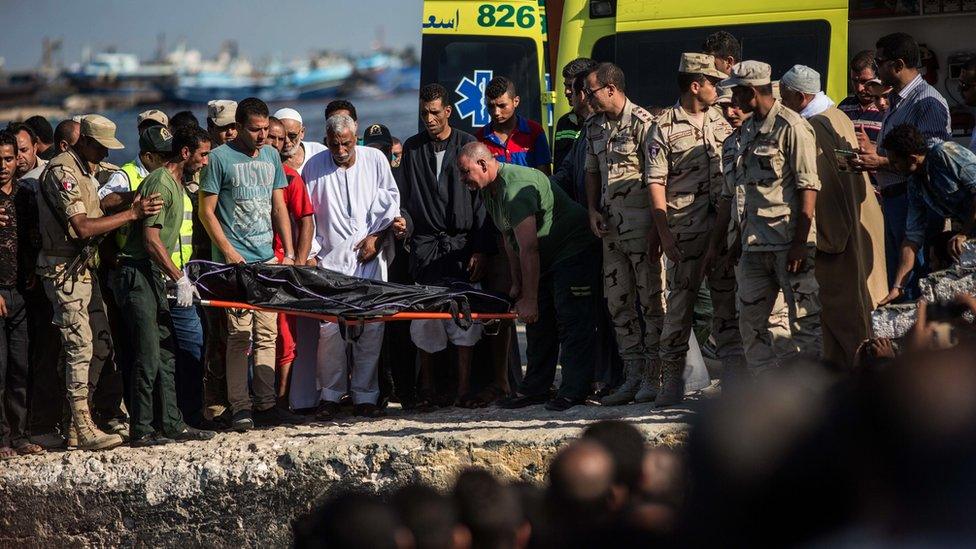The waiting game: Aboard the Mediterranean's migrant rescue boats
- Published
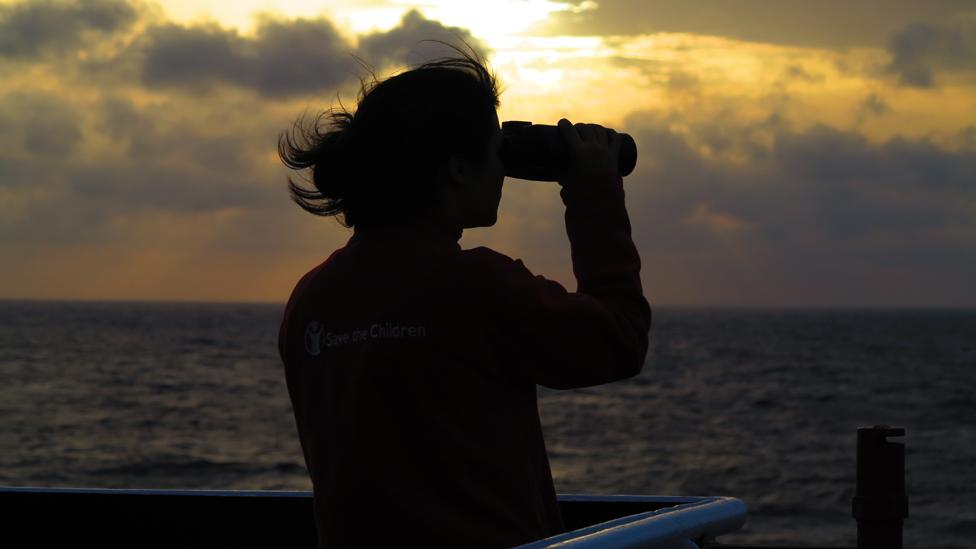
A rescue mission in the Mediterranean is a waiting game. Going to the aid of people risking the secretive and dangerous crossing to Europe requires planning and patience.
I spent eight days at sea with one such mission, launched in August by the charity Save the Children. It is one of eight or nine humanitarian groups operating in the Mediterranean as part of a voluntary migrant rescue effort that has grown since last summer. More than 3,000 people have drowned in the Mediterranean this year, according to humanitarian organisations.
About 300,000 people have made the perilous Mediterranean crossing this year to reach Europe. About half arrive in Italy, travelling from Africa and sometimes from the Middle East, trying to escape war, persecution and hunger, or simply in search of a better life.
Each morning the watch starts at 06:30, with aid workers scanning the horizon to catch sight of a migrant vessel. The aim is to help anyone in the water or in vessels in distress. I've come to know a lot about the sea, and the wind, and the absolute necessity of the right conditions for a rescue.
The dinghies full of migrants are launched from the Libyan coast at night, when the smugglers are less likely to be caught. But the winds have to be blowing from the south, to help the loaded vessels get out to sea - their engines alone aren't powerful enough.
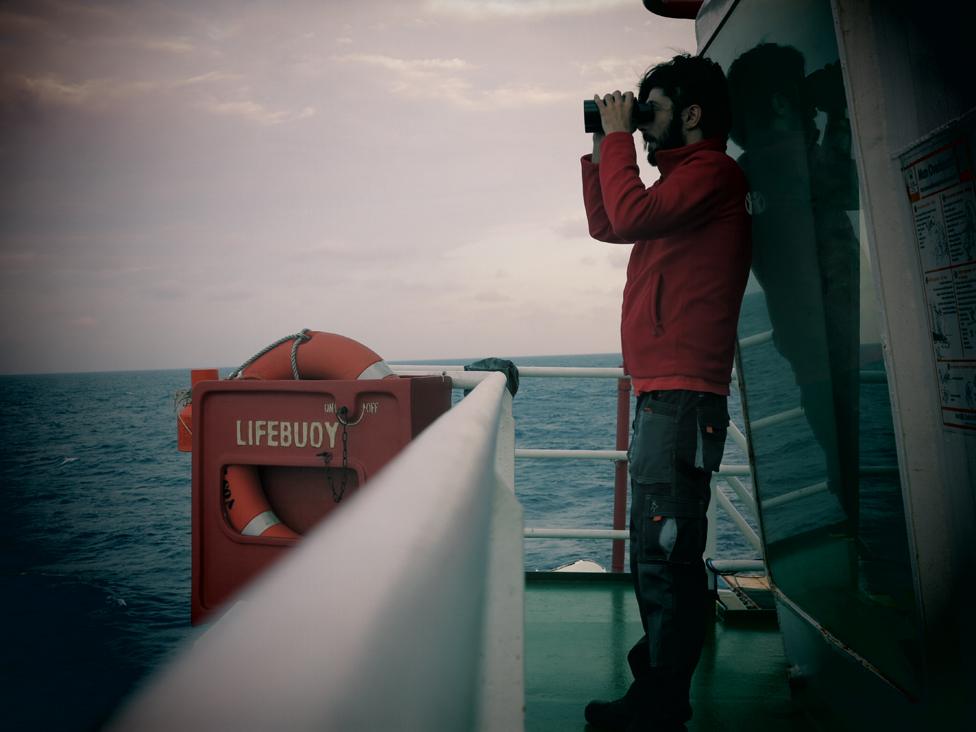
For a safe rescue to take place, the sea can't be too choppy, as it then becomes dangerous for the rescuers as well.
So for several days, we wait. The team of 13 aid workers and rescuers keep themselves going, carrying out drills, checking lifejackets and supplies, and taking the smaller rescue boats out on to the ocean for a practice run.
The team leader and the ship's captain check the wind and waves forecast repeatedly. The 06:30 watch happens every morning, even if the conditions aren't right.
There's a constant tension between the beautiful surroundings - the air in late summer is warm and soft, the sea a brilliant deep blue - and the job that everyone knows they are here to do.
After seven days at sea, the alarm goes out - we are about 30 miles from the Libyan coast, and a boat is spotted. Through binoculars, rescuers think there are about 100 people on board. They can see no orange, meaning no lifejackets.
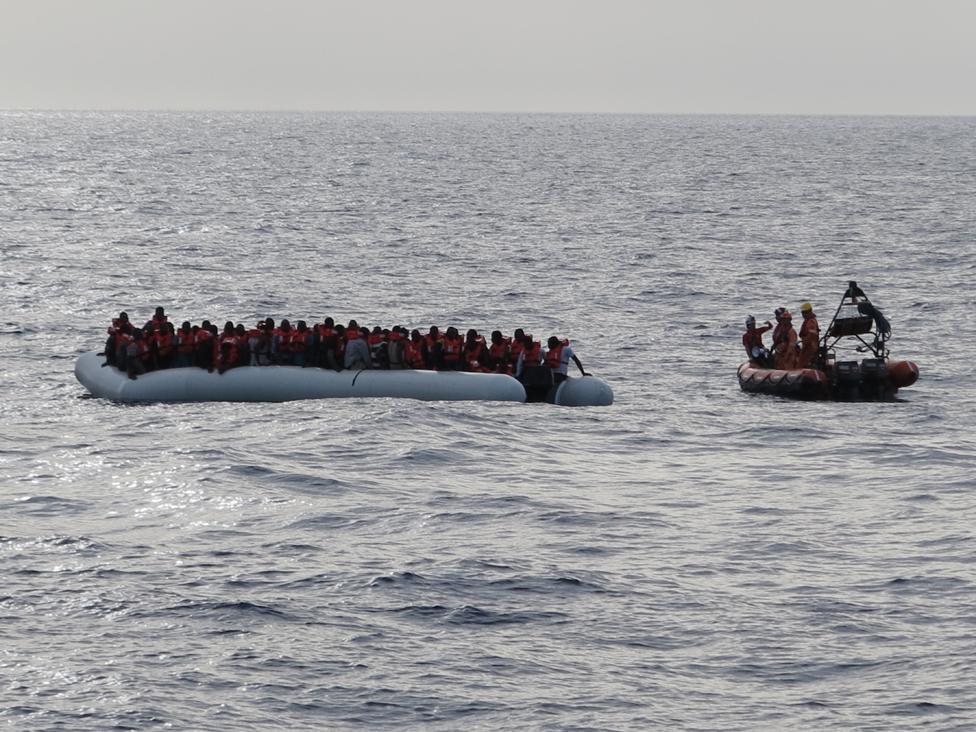
There's a scramble to get the smaller boats out, and within the hour the rescue is under way. I go out with one of them - and see the vessel close up. It is half as long again as our boat, and has more than 100 people crammed into it. Ours takes 12.
The dinghy is all rubber and plastic - it's impossible to imagine how anyone could think that might make it to Italy.
"It's a weapon," one of the Italian rescuers tells me. "It causes people to die."
The migrants - all male - are for the most part quiet and dazed, although there's some agitation as they jockey to get on the rescue boat. An aid worker calls to them in French and English to stay calm and to stay seated.
Once on deck and safe, the men smile and slap hands in understated high fives. But there's no air of celebration. One very young man kisses the deck in stunned relief and then holds his head in his hands.
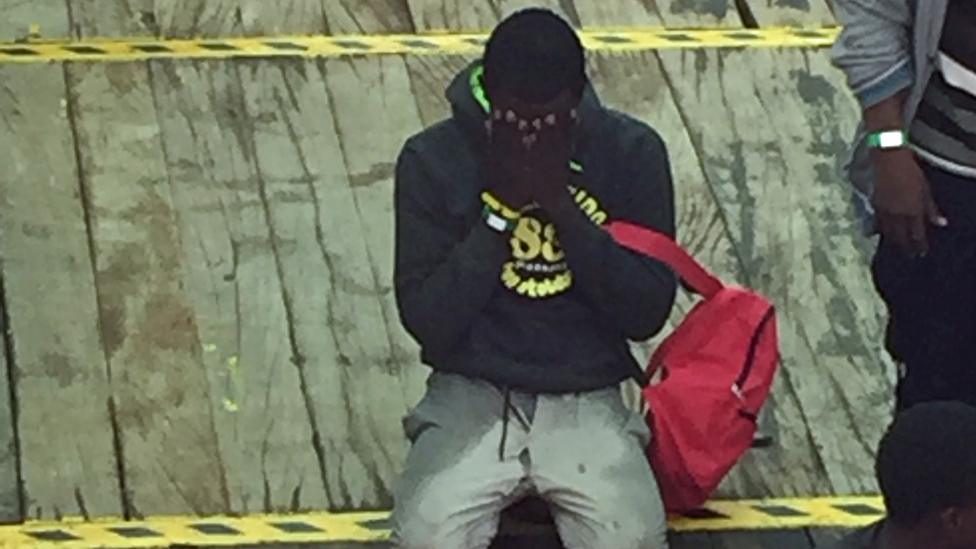
I speak to another, who's from the Ivory Coast, and who doesn't want to be identified. He left four years ago because of unrest. He says he's experienced kidnap and forced labour - and hopes that Europe will welcome him. But, I ask him, what if it doesn't?
"We are all human beings, whatever the colour of our skin. We don't do this because we really want to - we do this because we have to. If only people would welcome us because we are not there to harm them - the conditions in which we find ourselves are really unfavourable."
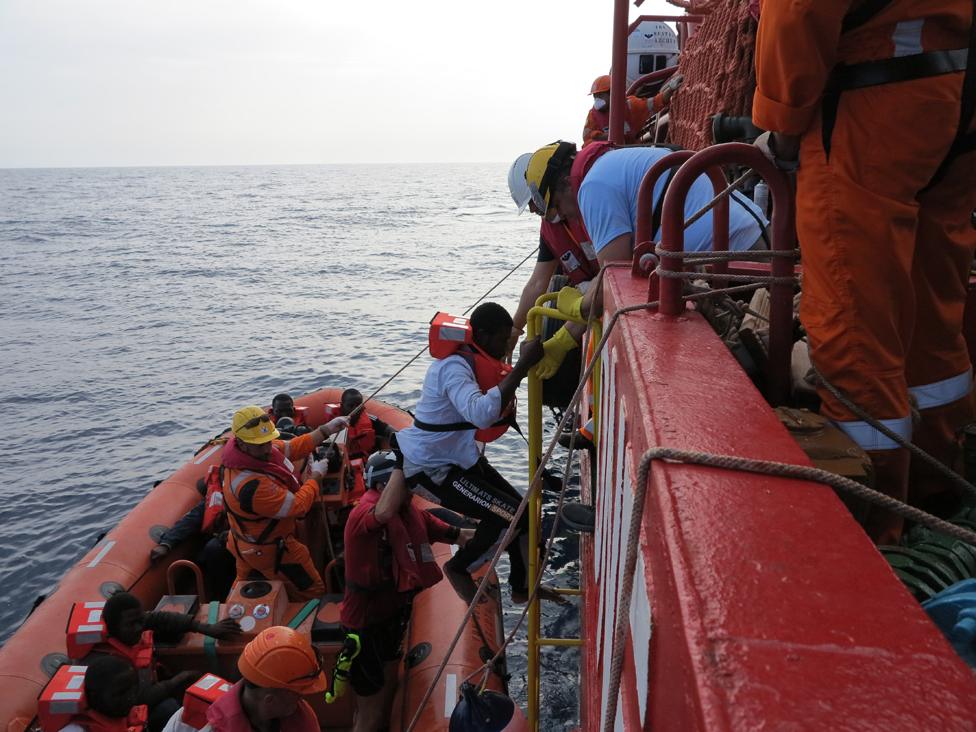
Then there's a second rescue. Another aid ship, run by Medecins Sans Frontieres, transfers another 100 people to our ship. There are women in this group, mostly from Somalia. Some look shattered by whatever they've been through.
I speak to a 16-year-old girl, who's escaping a forced marriage. She's been travelling for 10 months and wants to study medicine and then go back to Somalia. Italy, where she is heading, will let her stay until she's 18. But what then?
"I pray for the best. If you don't like me, maybe you have your own reasons. I may be different from others, I may be the same as others. It's for you to decide."
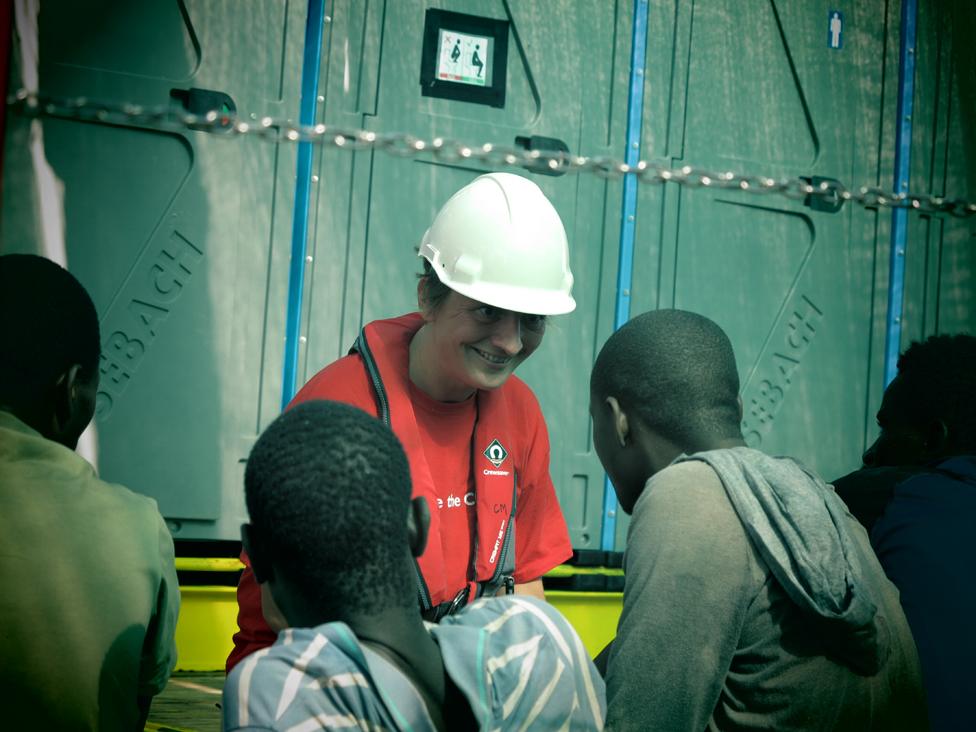
When the 200 or so people arrive in Italy, they will start the process familiar to tens of thousands of migrants before them. Registration, application, camps and reception centres. A granting of asylum for some. Melting into a clandestine existence for others.
It's an uncertain future. Meanwhile, the rescue missions will continue, as the dinghies keep coming.
- Published22 September 2016
